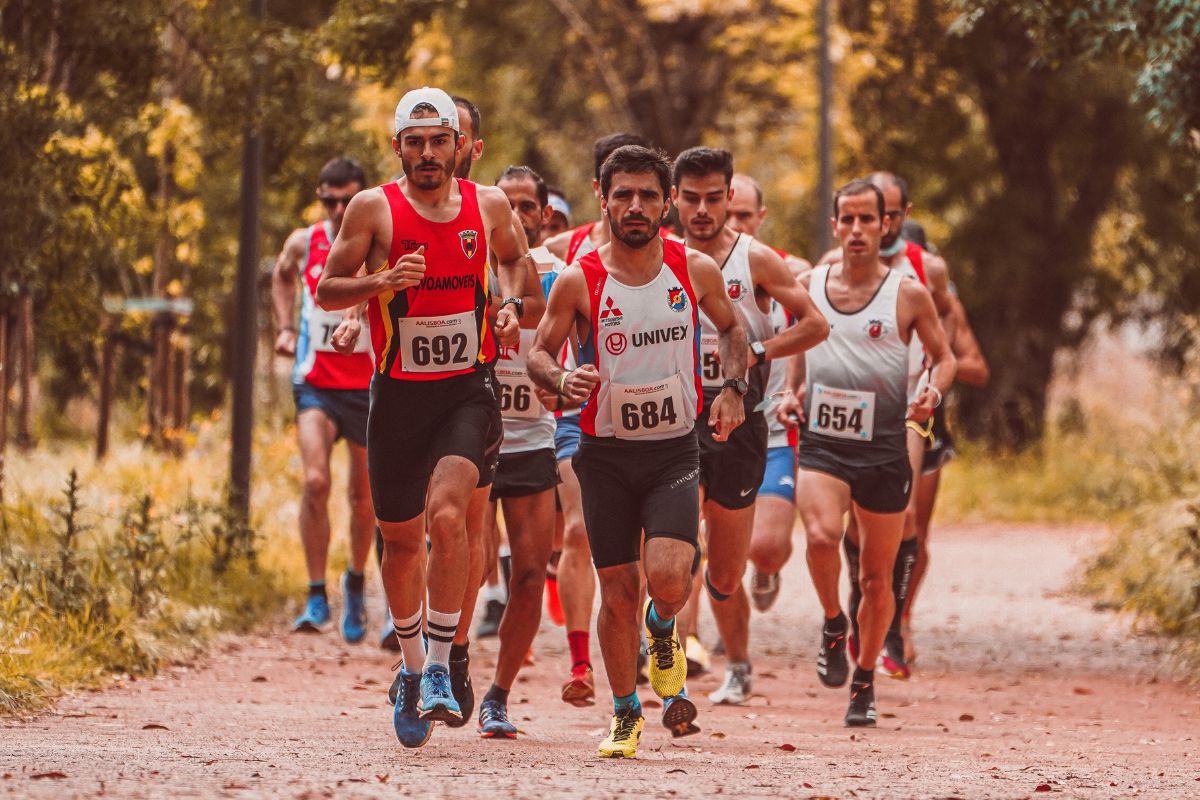The 200m is a beloved event that requires you to have a lot of speed and endurance.
It combines the brutal sprint of the 100m with the need for technique and stamina you’d find in one of the longer races, such as the 400m.

Though it may look easy, the 200m requires a lot of planning and training, knowing where to break into sprints and where to conserve energy to give you a chance of winning, while also not burning out.
The plan you use to finish each 200m race can also change depending on what lane you end up running in, so you need to be tactical and patient when it comes to working out your strategy.
In this article, we’ll be going over everything you need to know and consider when planning for the 200m race.
What Is The 200m?
The 200m is a race that is considered a “dash” race. It’s 100m longer than the 100m race, but not quite as long as the 400m, and it combines the speed of the 100m with the endurance of the 400m.
Most of the race will be a sprint, but because it is slightly longer than 100m, you need to make sure you have lots of stamina to successfully complete it.
Preparing For The 200m
There is a lot of preparation you need to do in order to be successful in the 200m race.
From setting up your blocks, to training, to planning, there are lots to consider in order to be able to complete this race effectively.
Let’s have a look at some of the things you need to prepare for before you start racing!
Training
Above all, you need to constantly train when you’re preparing to run the 200m race. You will need to work out a good training routine and stick to it.
If you’re focusing on the 200m race, it’s in your best interest to also be able to complete the 100m race and the 400m race.
When you have the ability to complete both these races, you can take the techniques from both and combine them to effectively complete the 200m race.
So when you train, train for the 100m and 400m races too. Even if you don’t end up racing them competitively, it will drastically improve your performance in the 200m.
Set Your Blocks
Another important thing you need to do when you’re preparing for the 200m is you need to learn to set up your blocks.
It is important that you set up your blocks in training the same way you would for competitions.
The front pedal of the blocks should be 2 to 2 1/4 foot lengths from the starting line and the back pedal should be 3 to 3 1/4 foot lengths from the line.
This is the most effective positioning of the blocks to ensure a better outcome for yourself.
If you want to mix things up a bit and try any new techniques, training is the best time to do that. Do not start experimenting with new techniques during competitions.
How To Run The 200m Effectively

There are four segments of the 200m where you need to switch up your technique for each.
We’ve divided those segments into steps, so we can go into more detail, and so you can know what you need to do at each step.
Step 1: 0m to 40m
The first segment is the start of the race, between 0m and 40m. You need to take your marks on the blocks during this segment and listen out for the officials to know when you need to set off.
While you’re on the blocks, raise your hips and keep all your pressure on your feet.
As soon As the gun is fired, you need to push off your feet, hard and swing both your hands to build momentum.
The first 40m are all about attacking. You will want to fire your muscle fibers as you sprint down the first 40m.
Make sure you accelerate hard for this segment and conserve a bit of energy ready for the next step.
Step 2: 40m to 110m
Now we move on to the next step: the 40m to the 110m. During this segment of the race, you will wrap around the bend of the track.
This is where you can really make or break where you’ll end up positioning in the race.
It’s important to note straight away that you do not want to slow down during this segment, but rather you want to take the momentum and acceleration you built up in the last segment and use it to maintain your speed as you make it around the bend.
If you see your competitors running past you during this segment, do not react or try and speed up.
They are likely to run out of stamina because they are running faster and you’ll be able to catch up and overtake them a little further down the track.
Keep going with your particular routine and don’t pay attention to your competitors during this segment. Focus on you.
This is one of the areas you will want to focus on more during your training. Once you get the right feel for the 40m to 110 segment, you’ll be able to approach it with ease and confidence in your abilities.
Step 3: 110m to 140m
Now for step three: the 110m to the 140m segment. This is when you want to reaccelerate and get a bit more speed again.
As soon as you come off the bend, you will want to take the technique and sprint that you used in the 40m segment and do it again here.
Because you reserved some of your energy and acceleration power in the previous segment, you shouldn’t have any problem doing it again here.
You will want to focus on your speed and technique during this segment and keep it maintained so you can go into the final segment without any problems.
Step 4: 140m to 200m
And finally, we have the final segment: the 140m to the 200m. As soon as you get to what’s known as the “home straight”, you will want to keep your technique in momentum.
All you need to do for this segment is maintain your stamina and sprint as fast as you can.
You will feel your stamina and endurance start to whittle down by this point, but if you’ve trained, you’ll be able to maintain it.
You only have to keep the sprint up for 60m, and if you’re a fast runner, that shouldn’t be a problem.
Just stay focused on yourself. Try not to focus too much of your attention on your competitors, as you will see them in your peripheral vision and some may be in front of you.
But you don’t need to worry about that, just focus on getting to that finish line as quickly as you can without burning yourself out.
Conclusion
The 200m may be one of the shorter races, but that doesn’t make it easy at all.
However, if you have the determination and stamina and you put aside the appropriate amount of time to train, you will be able to complete the race with no issues.
As you practice the 200m more, you will be able to successfully place in 1st, 2nd, or 3rd place without any issues too. Just keep practicing and you will eventually get there!
- Can Dogs Run Faster Than Humans? (Running With Your Furry Friend) - October 4, 2022
- 10 Doggie Fun Runs You Will Love [Ultimate Guide] - October 4, 2022
- What Are Division Results In Running? - October 4, 2022








